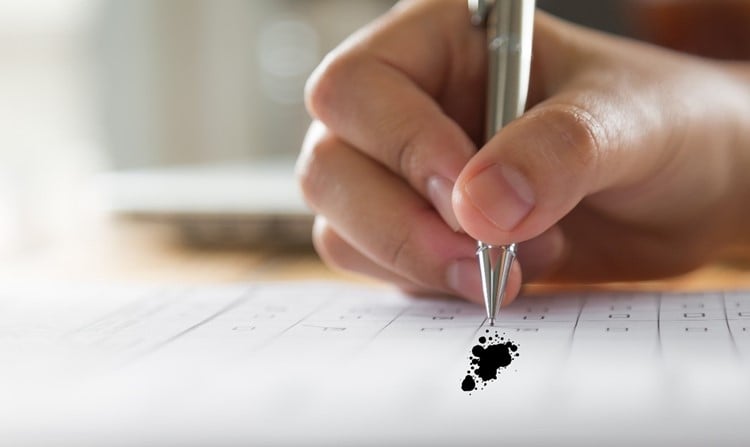
Forensic Document Examination
Handwriting and document analysis, which has been used since the 16th century, is different into many sub-specialties and fields of study. Examining a document whether it is a handicraft of the same person is among the most common methods of examination. A brand-new forensic document method has begun on state-of-the-art products and equipment. With these methods, which make the work of forensic experts without great effort, even the smallest change on a document can be detected. Document analysis methods differ in themselves and according to the document and method in which it is examined. When a general classification is made; under two headings as destructive and non-destructive testing methods.
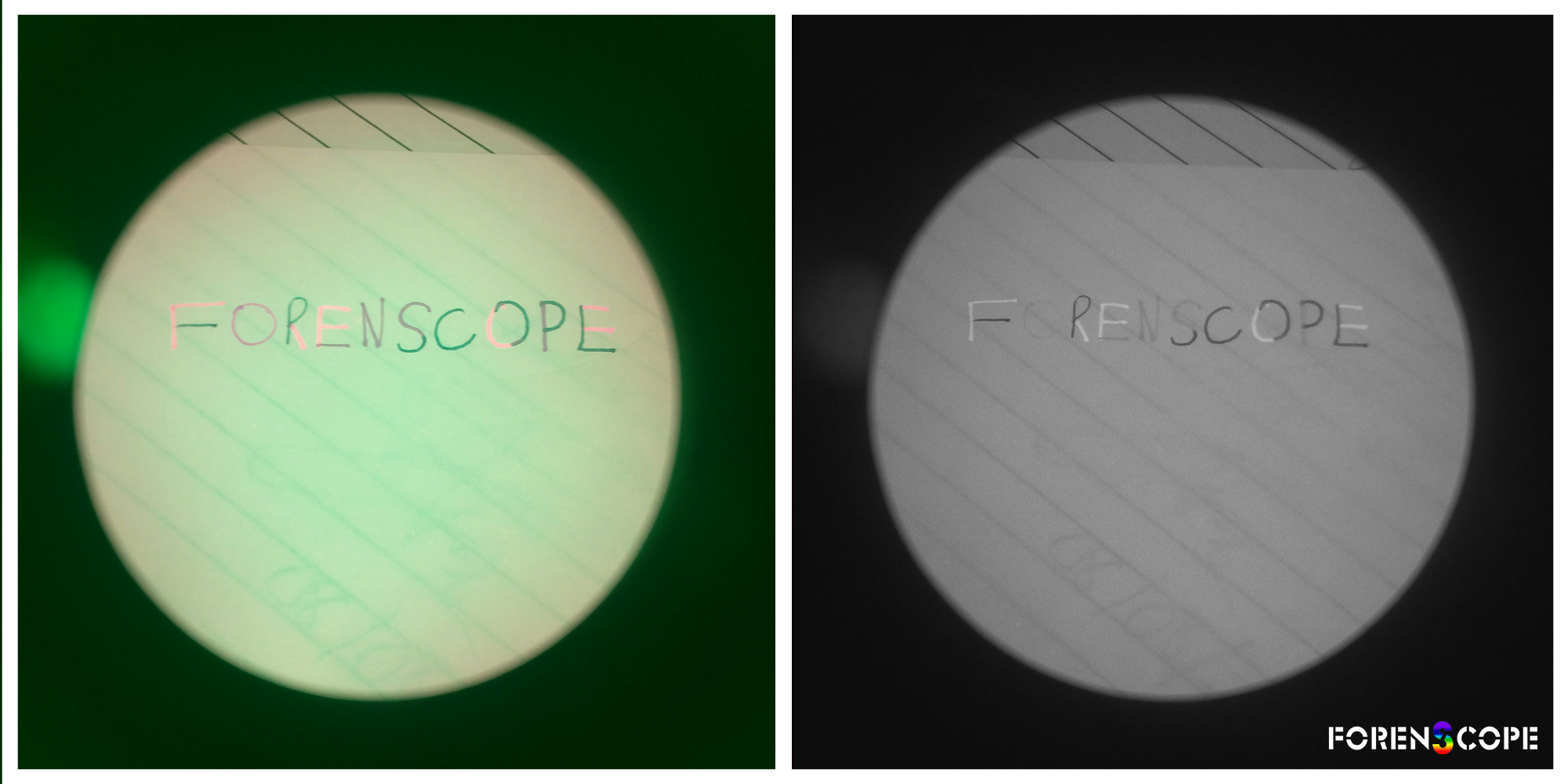
Image 1: Visualization of different inks with IR Fluorescent and luminescent lights.
Forensic Document Experts may consult to more than one method while conducting the examination. The most preferred document examination method is the non-destructive analysis methods. It can also be done simultaneously in a different way to be destructive and non-destructive. documents enhanced by chemical methods can be transmitted with light sources of different wavelengths.
 Table 1: Table of the most used forensic document analysis and methods.
Table 1: Table of the most used forensic document analysis and methods.
In a forensic evidence review, scientists use a variety of light sources. Alternative light sources are used in document analysis, as in other areas of forensic science. The technological revolution, which is advancing simultaneously with the developing age, encourages the emergence of new methods. Especially issues such as ink reviews, signatures and prints in writing remain a popular research topic for forensic document examinations.
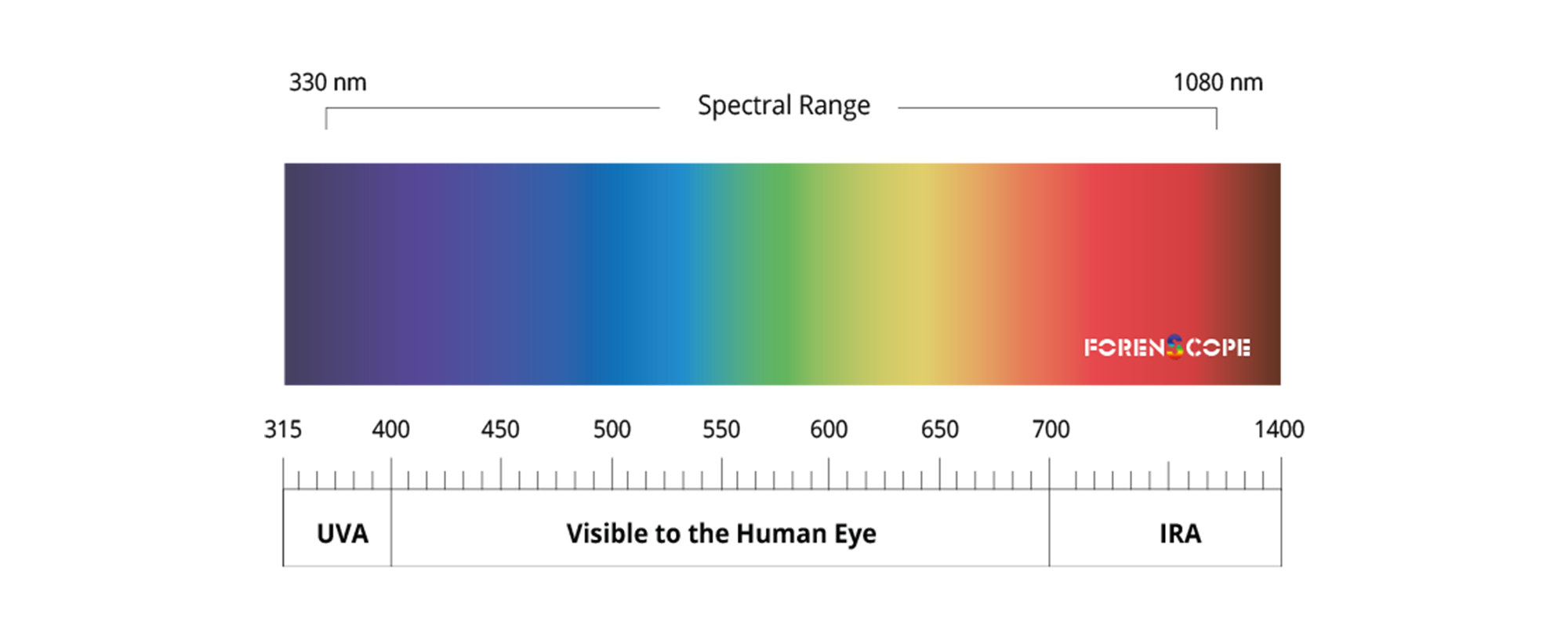 Image 2: UV/VIS/IR Spectral range
Image 2: UV/VIS/IR Spectral range
Multispectral Imaging Methods; Multispectral Imaging Methods; VIS is a method that records the spectral reflection properties of changes in the (Visible), UV (Ultraviolet) and IR (Infrared) range on the document. Lights of different wavelengths and ranges are in the first place in non-destructive inspection methods. With these methods, there are different options that can be preferred, from Ultraviolet light to Infrared light.
VIS (visible) Imaging Method; VIS light has wavelengths between 400 nm and 700nm. Via the high resolution, VIS light is used to observe the changes on the document by taking macro and micro shots on the sample.
UV (Ultraviolet) Imaging Method; UV light has wavelengths between 100 nm and 400 nm.
UV light, or ultraviolet radiation, is a form of energy that occupies a small portion of the electromagnetic spectrum. With UV lights, important documents can be viewed without any intervention.
IR (Infrared) Imaging Method; IR light has wavelengths between 750 nm and 1000μmuμm. Forensic document examination can also be visualized with radiations. IR examination, consists of content in parts that cannot be seen. Documented with proper lighting and camera training; additions, additions, can become additions.

Image 3: Ink Examination on Forensic Document.
For ink inspection, IR light is used to see different types of ink. Under certain IR wavelengths one ink will be more reflective than the other. Based on this feature; During the inspection, the expert will see one ink darker while the other is lighter.
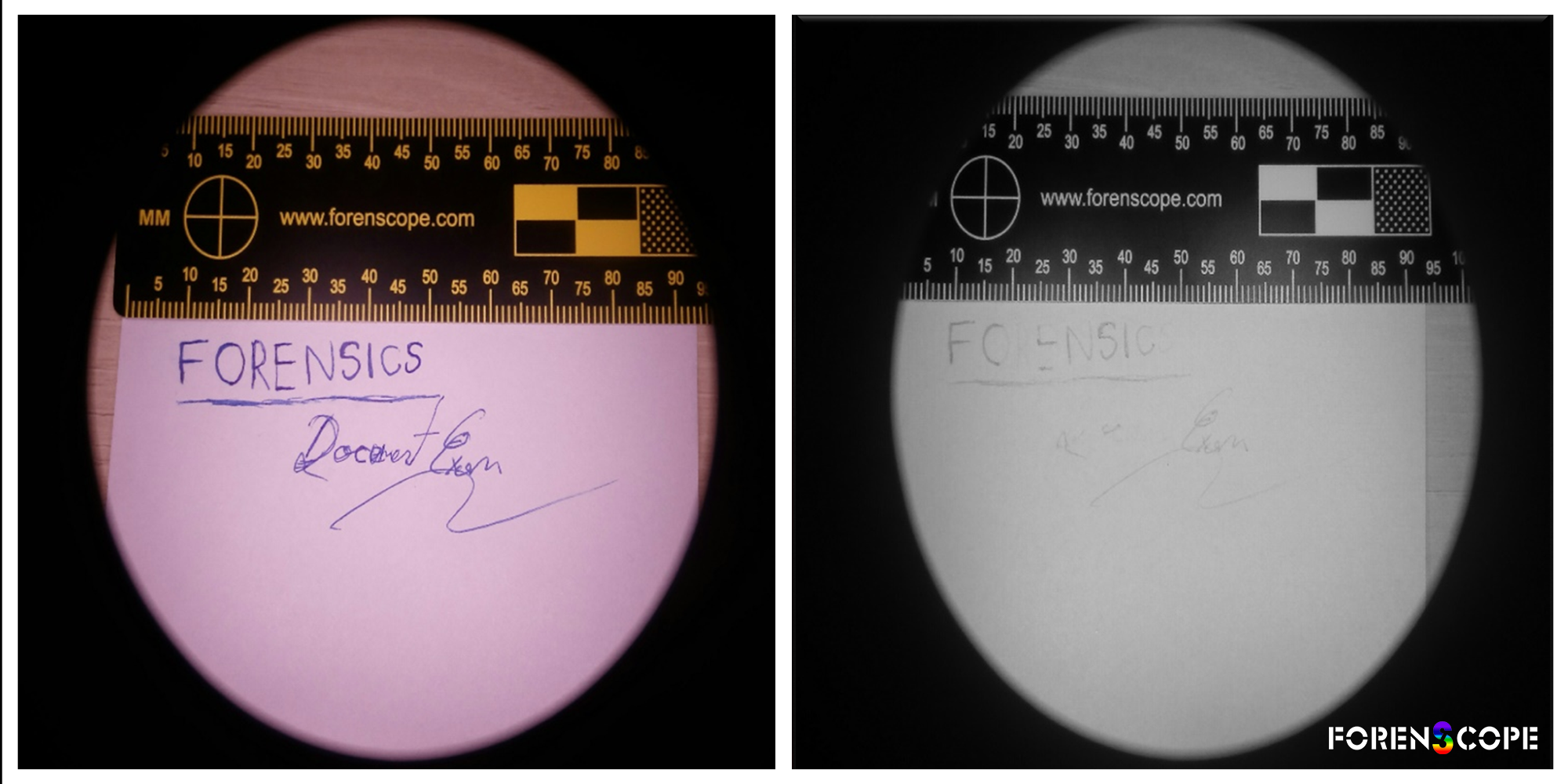
Image 4: Under IR wavelengths, one ink appears more reflective than the other. Therefore, one is darker and the other lighter.
Ink and writing on the document can be erased in various ways. By changing the wavelengths of IR radiation, it is possible to easily make the erased material visible and read.
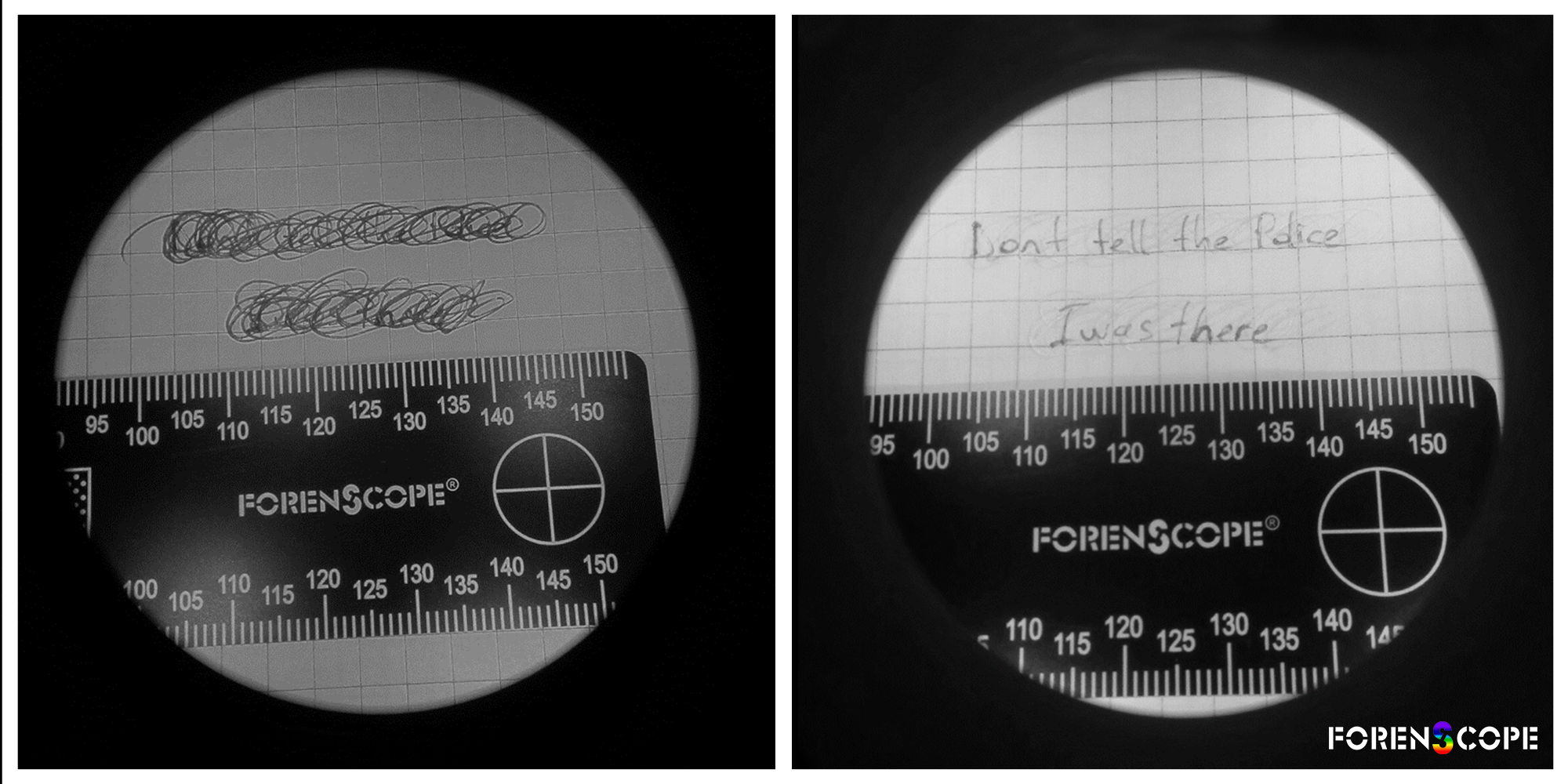
Image 5: With IR lights, it is possible to read the obliterated matter easily.
As the writing is erased mechanically, small particles of ink or pencil often remain on the outline. It may be possible to make the writing clear with IR imaging. Charred document examination is sometimes only possible with infrared photography, but may differ depending on the type of ink used and the degree of charred.
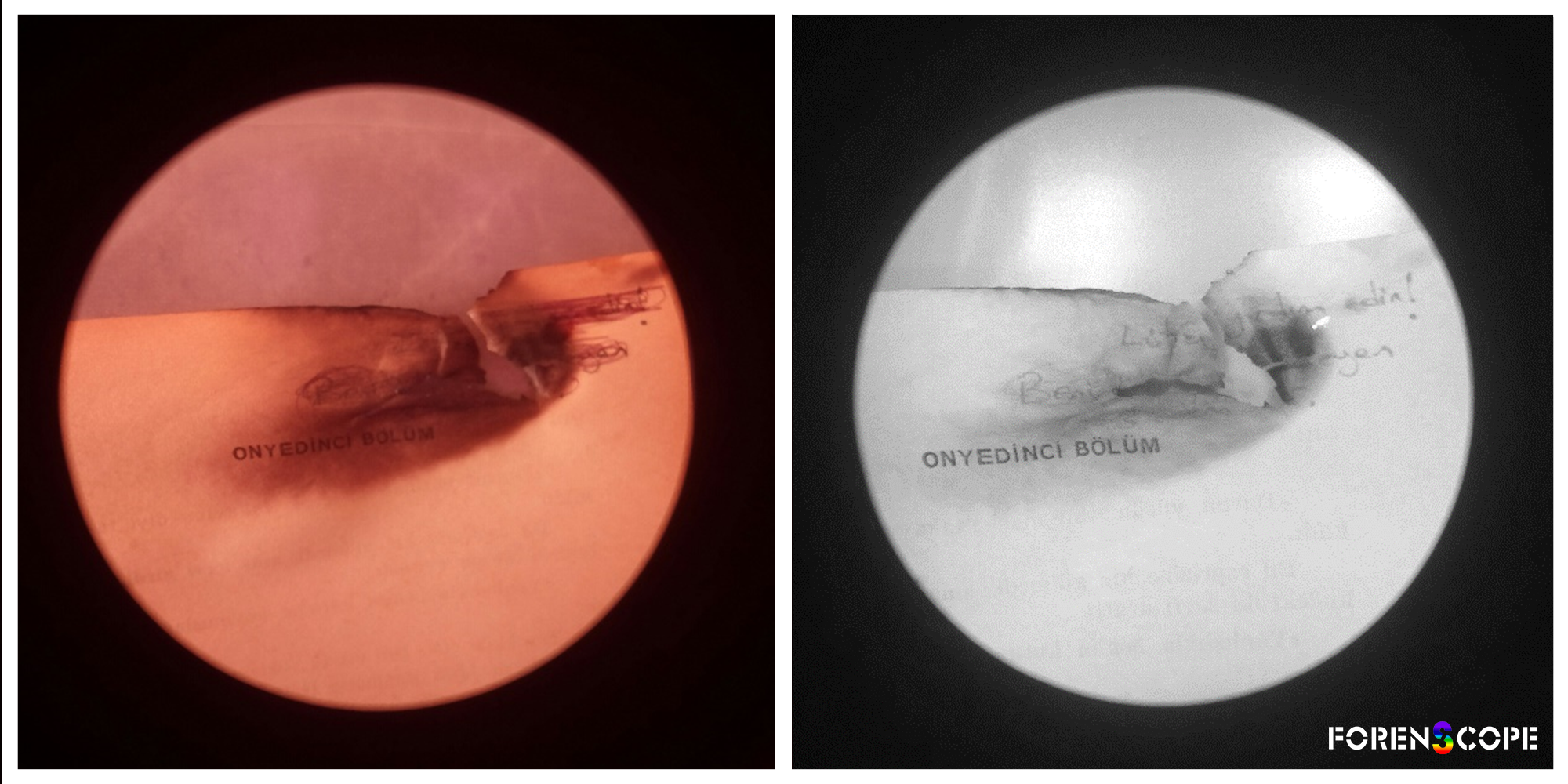
Image 6: Examination of charred documents.
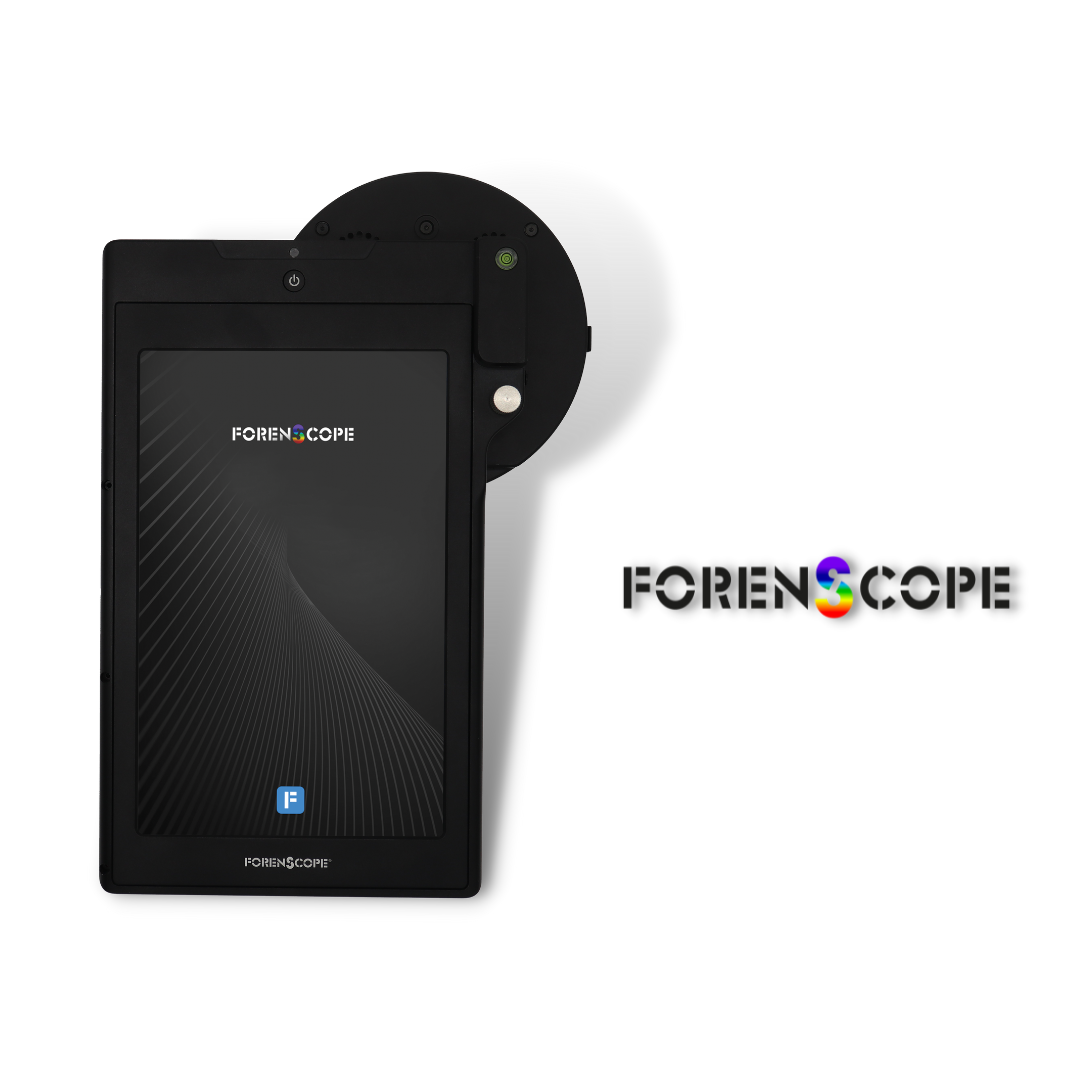
Image 7: Forenscope Mobile Multispectral Forensic Tablet
Ideal document examination is done by choosing or combining one of the 8 different filters and 10 different Narrowband lights of the Forenscope Mobile Multispectral Forensic Tablets. or more detailed reviews; Narrow with 10 different filters, 33 different options, ForenScope DocEx Tablet with 16.5 bands with different light elements can be used. It takes seconds to design different patterns, as the Filter and Light selection can be done very easily and quickly.
Forenscope Mobile Multispectral Forensic Tablet; It includes details on document review, training/threatening letters, different ink analysis, scribbled document, official paperwork, and credentials. At the same time, special preference for the device; External light is passed through the centers to focus the Forenscope Darkroom accessories. With the help of this accessory, the image is obtained in a highway.

